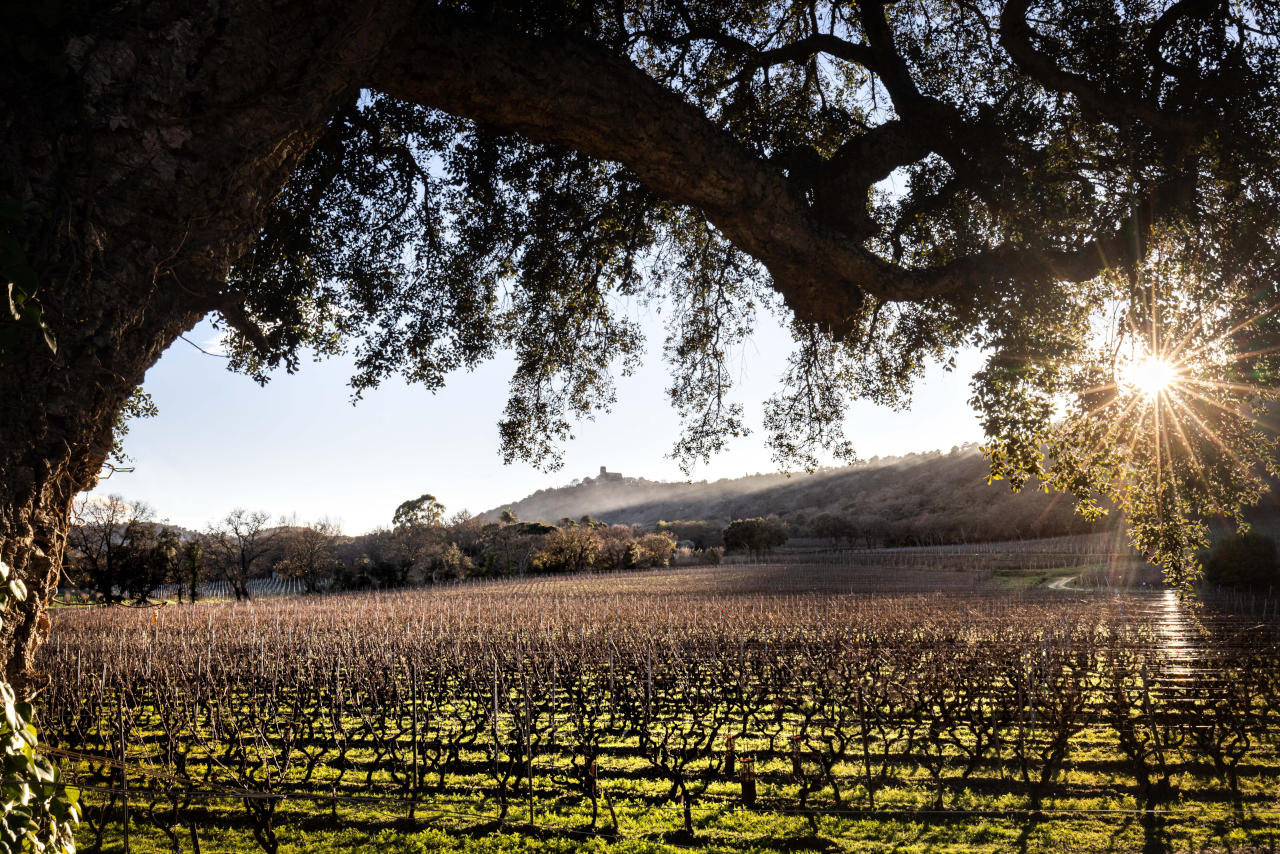In France, excellent white wines are made in all the different wine regions. Depending on the terroir of these regions (climate, soil composition, and terrain), many berry varieties are used, and drinks with very different styles are produced.
-
Alsace is an area where a lot of variety wines are made, i.e., the musts of different grape varieties are not mixed. The wines are mainly fresh and mineral in nature, suitable for a dining table rather than for just enjoyment. The main grape varieties are Riesling, Pinot Gris, Pinot Blanc, Gewurtztraminer, and Muscat. Most wines are dry, but wines from grapes in warmer growing years can sometimes be semi-dry. The producers are Domaine Louis Sipp, a top producer in Ribeauvillé, and Domaine Ostertag, a biodynamic viticulture icon in Epfig.
-
Bourgogne (Burgundy) is home to great white wines. The best Chardonnay wines in the world come from here. In our selection, you can also find extraordinary Grand Cru and also great Premier Cru or simply tasty and complex wines aged in oak barrels marked with the name of the village. Our producers are Domaine Jacques Prieur, Olivier Leflaive, the tops of the region, and the father and son Michel Magnien and Fréderic Magnien. The world-famous mineral and elegant Chablis wines are produced by the small Clotilde Davenne winery. Maison Trenel makes the lushest Chardonnays in the south of Macon.
-
Jura is a small wine region in eastern France. There you will find mineral and elegant Chardonnay wines with oak barrel aging, as well as the stronger white drinks of the region's "honor and pride" - the Savagnin grape variety - near the towns of Arbois and L'Etoile. The crown jewel of the region is Vin Jaune, oxidized with extra long barrel aging. What we offer comes from one of the most famous wine estates in the region - Domaine Rolet.
-
The Loire Valley is the largest white wine-producing region in France. Many different types of dry as well as semi-dry wines are made from the Melon de Bourgogne (Muscadet), Chenin Blanc, and Sauvignon Blanc varieties. The tiny Domaine de la Vinçonniere makes the mineral, light and fresh Muscadet Sevre-et-Maine wines. The best abundant and lush Chenin Blancs come from the Domaine Huet cellars near the town of Vouvray.
Domaine Laporte brings to our selection fresh, "green" mineral wines from the famous Sauvignon Blanc variety with the markings of Sancerre and Pouilly-Fumé.
-
Although the Rhône Valley is known mainly for its red wines, it also produces excellent, powerful, and tasty white wines, mainly white wines with a long oak barrel aging from Viognier, Roussanne, Marsanne, Grenache Blanc, and other grape varieties. The famous whites of Condrieu, Saint-Péray, Hermitage and Châteauneuf-du-Pape come from well-known estates such as Tardieu-Laurent, Domaine de la Janasse and Domaine Francois Villard. We also offer beautiful and lush white wines from Château La Canorgue Luberon and Château L’Ermitage (L’Ermite d’Auzan) Costieres de Nimes.
-
Sud Ouest is an area where different wines are made with different terroir elements. We are happy to offer mineral and lighter Domaine Cauhapé wines from Jurançon and delicious fruity and light Domaine Uby whites from the Gascony areas.

MANUFACTURE OF WHITE WINES
In the production of typical white wine, the pressing is carried out slowly, in the initial phase of which the skin of the berries is broken under pressure, and the juice is released. After the main part of the juice has separated in a free-flowing way, pressing is continued under higher pressure to obtain the last part of the juice contained in the skins. The juice obtained at the end of the pressing may be used separately if necessary. The wine must is then placed in a fermentation tank, which today is mostly made of stainless steel, and large concrete fermentation tanks and oak barrels are also used. White wine is fermented at a fairly low temperature (typically 10-20°C) to preserve fresh flavors and delicate aromas. Fermentation takes 2-4 weeks. A cooling system is used to ensure the correct temperature. The finished raw wine is aged in either stainless steel or concrete containers. The aging of more valuable wines takes place in oak (rarely in other wood species) barrels of different sizes and often on the yeast sediment (on the lees).



